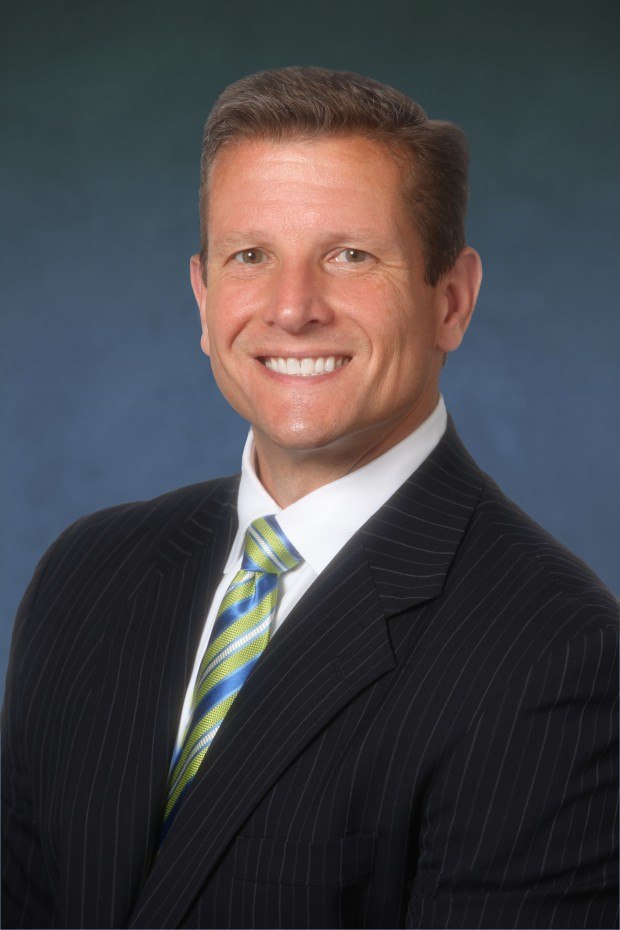Innovation and customer focus are central to the strategy of the one of the nation’s largest property/casualty insurers, for which being the biggest competitor is not the primary goal, according to the executive leading the carrier’s U.S. P/C team.

“We are not trying to be simply the largest casualty insurer in the United States. We would like to be viewed as the smartest casualty insurer in the United States,” Robert Schimek, President and CEO of AIG Property Casualty’s Americas Region, said during a keynote address at the Advisen Casualty Insights conference in late March. (AIG’s Americas region also includes Canada and part of South America.)
Smart underwriting, he said, is necessary in an environment where low interest rates, and correspondingly low contributions to overall profit from investment income, drive a focus on the underwriting component of income.
“We want to deliver the most value to our customers,” he added, expressing the hope that AIG competitors would have the same fundamental goal. “We should [all] be…putting the customer at the center of what is we’re trying to do,” he said.
After talking about the ways in which AIG has made its casualty underwriters smarter, and before going to share examples of places where AIG demonstrates innovation in delivering customer service, Schimek explained why he believes the latter is important with reference to a 2005 book titled, “Blue Ocean Strategy.” Reading a passage from the book by W. Chan Kim and Renée Mauborgne aloud, the AIG executive quoted the authors view that “‘competing head on results in nothing but a bloody pool [or] red ocean of rivals fighting over a shrinking profit pool'” within overcrowded industries.
Drawing a message for the P/C insurance industry from the book, Schimek reasoned, “We can all fight to be the best at things that already exist,” rather than being innovative by developing new products and services. But then “it just becomes a red ocean.”
“Our industry seems to have a really uncanny ability to find its way into the red ocean and into the bloody waters by competing head-to-head and driving profitability out of this business,” he said, referring to hard and soft market cycles that insurers tend to attribute to the dynamics of supply and demand.
“When we compete on the basis of being unique, that’s where we really have the opportunity to get to the blue ocean territory,” Schimek concluded.
Serving Customers and Noncustomers
Breaking down the customers that AIG serves in the casualty market into four categories—businesses, workers, drivers and patients—Schimek had examples of innovative products and service delivery for each, even offering one that was available to customers and non-customers alike.
Referring to business customers, for example, he said that AIG had introduced a web-based service called NOVI, which provides food and beverage companies with an estimate of their probable maximum recall loss in the event of an accidental contamination. According to Schimek, representatives of these businesses can go to the website—whether they are AIG customers or not—and after answering a few simple questions, receive the maximum recall cost estimate on a confidential basis within days.
“Before we had the service, a risk manager had to hire a team of consultants, and they had to physically inspect the plant, invest the time and considerable expense just to understand their exposure, and then they could begin to manage the risk.”
Now, the same risk manager can upload the NOVI tool in any one of 14 different countries in any of six different languages and get a single number out of it. The tool, Schimek said, uses more than 80 different data points and a proprietary methodology based on more than AIG’s 25 years of doing product recall and contamination work in the casualty space.
Earlier in his presentation, he noted that another customer-focused innovation for businesses is a new policy contract—a global casualty single solution form—launched for a growing number of U.S.-based multinationals in the middle market space who are looking to extend their casualty business overseas.
These insureds can get domestic casualty, foreign casualty and excess casualty coverage in one underwriting contract, through one submission form online, and coordinated by one claims contact, he said.
Moving on to discuss products for drivers whose accidents are covered under AIG casualty products, Schimek talked about the fact that one of the most common causes of driver accidents is fatigue. Recognizing this, AIG partnered with Bose to identify technology designed to reduce seat vibrations that induced driver fatigue, ultimately lowering losses for AIG’s client company, and for AIG, he said.
Smarter Underwriting Means Better Tools
Better customer experiences derived from the driver tool, or from “Advanced Injury Analytics”—a technology for automatically pairing challenging workers compensation cases with experienced claims adjusters—aren’t the only benefits of innovation. Better underwriting results are critical in an environment where investment income is weak, Schimek said.
“We can’t change interest rates by ourselves. We can be better underwriters, and we can focus on the things that we really can control, such as innovation and customer service,” Schimek said, concluding a keynote address that he began with review of Treasury yield curves and a line-by-line analysis of the impact of low interest rates.
Schimek first spoke about a property line with a one-year duration between when premium receipt and payment of claim. Here the lack of investment income isn’t a big deal, he said. While noting that there has been a 7 percent decline in the one-year Treasury rate between 1990 and 2013, he said “I only hold the premium and those reserves up for a year. I’m not getting much help [from investment income] even with 7 percent on my portfolio,” he said.
On the opposite end of the spectrum, excess workers company has a 16-year duration. “We’ve lost 500 basis points between 1990 and today, year after year after year after year” for 16 years. “If you don’t get your underwriting decision correct in excess workers comp, the misery will last with you for 16 blissful years, and you’ll get the opportunity to relive that experience of not getting the underwriting right, and getting virtually no fundamental help on the investment income side,” he said.
To get the underwriting right in various casualty lines that have durations of four-to-16 years, AIG is arming its underwriters with better tools, but not replacing them with technology, Schimek said, pointing to a photo depicting soldiers in the U.S. military to make his point. “We still need the infantryman. The human beings behind the dress are fundamentally the same, but they’re armed differently today than they were in World War I.”
“Today, they’ve got night vision goggles, automatic weaponry [and] Kevlar vests,” he said.
“Anyone who says the underwriter is getting replaced by some black box technology, you can’t have it,” he declared. “You need the human being inside of that outfit to do their job, but we have a responsibility to give them better tools than we’ve ever given them before,” he said.
AIG investments aimed at better underwriting, he said, include putting over 100 people on its science team. Engineering and risk analytics teams in Bangalore India and in Shanghai help AIG “to provide smart information and give better tools to underwriters to help them make better decisions,” he said.





















 First Atlantic Hurricane Forecast for 2026 Suggests Season Close to 30-Year Norm
First Atlantic Hurricane Forecast for 2026 Suggests Season Close to 30-Year Norm  Executives on the Move at Liberty Mutual, Cowbell, W. R. Berkley
Executives on the Move at Liberty Mutual, Cowbell, W. R. Berkley  How Insurers Can Avoid Post-Merger Technology Failure
How Insurers Can Avoid Post-Merger Technology Failure  Good Times for U.S. P/C Insurers May Not Last; Auto Challenges Ahead
Good Times for U.S. P/C Insurers May Not Last; Auto Challenges Ahead 





